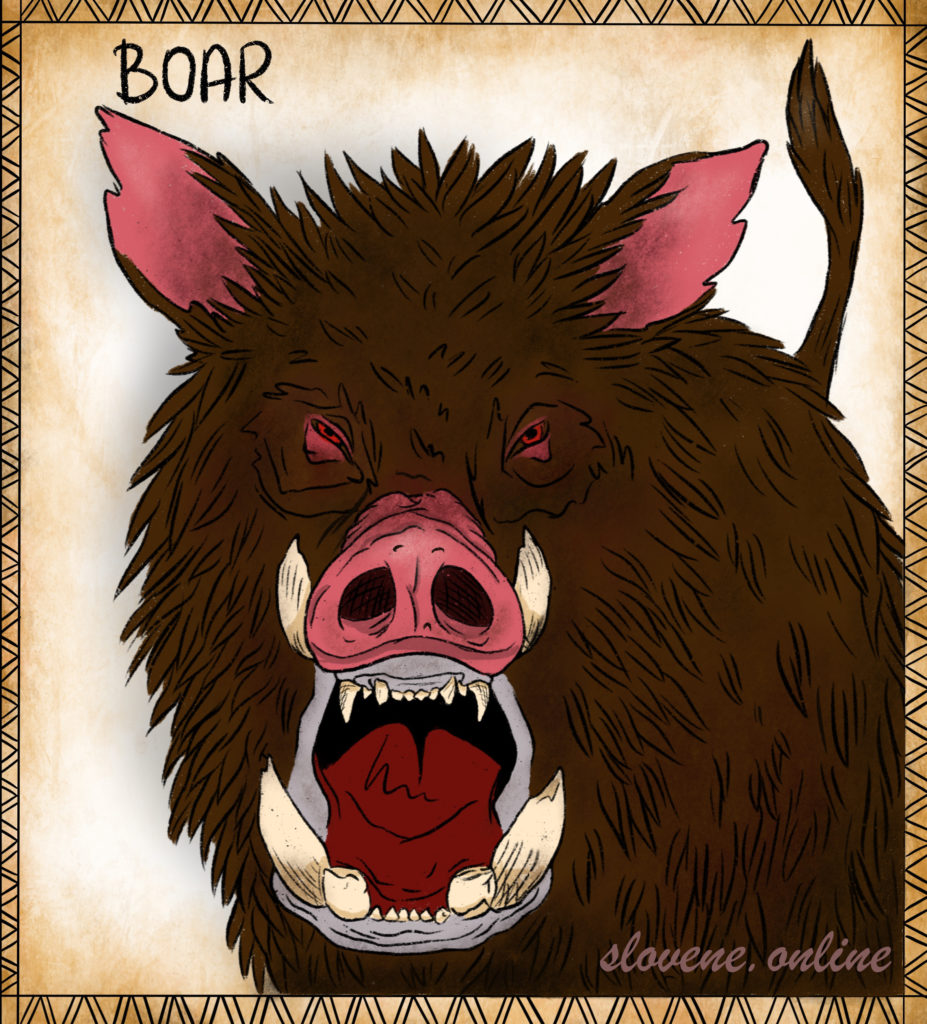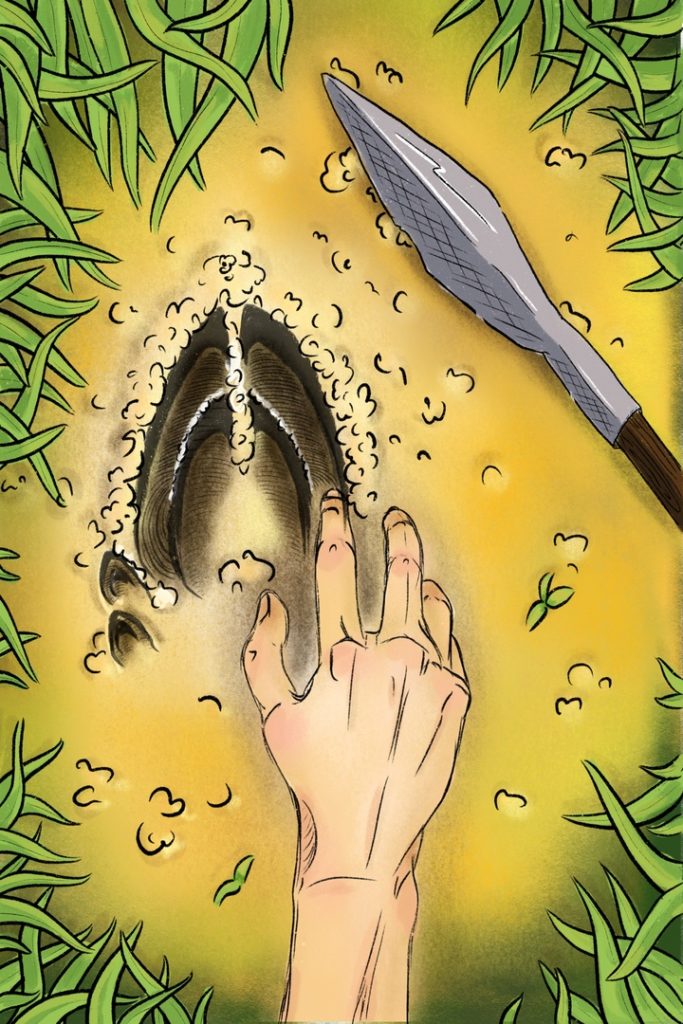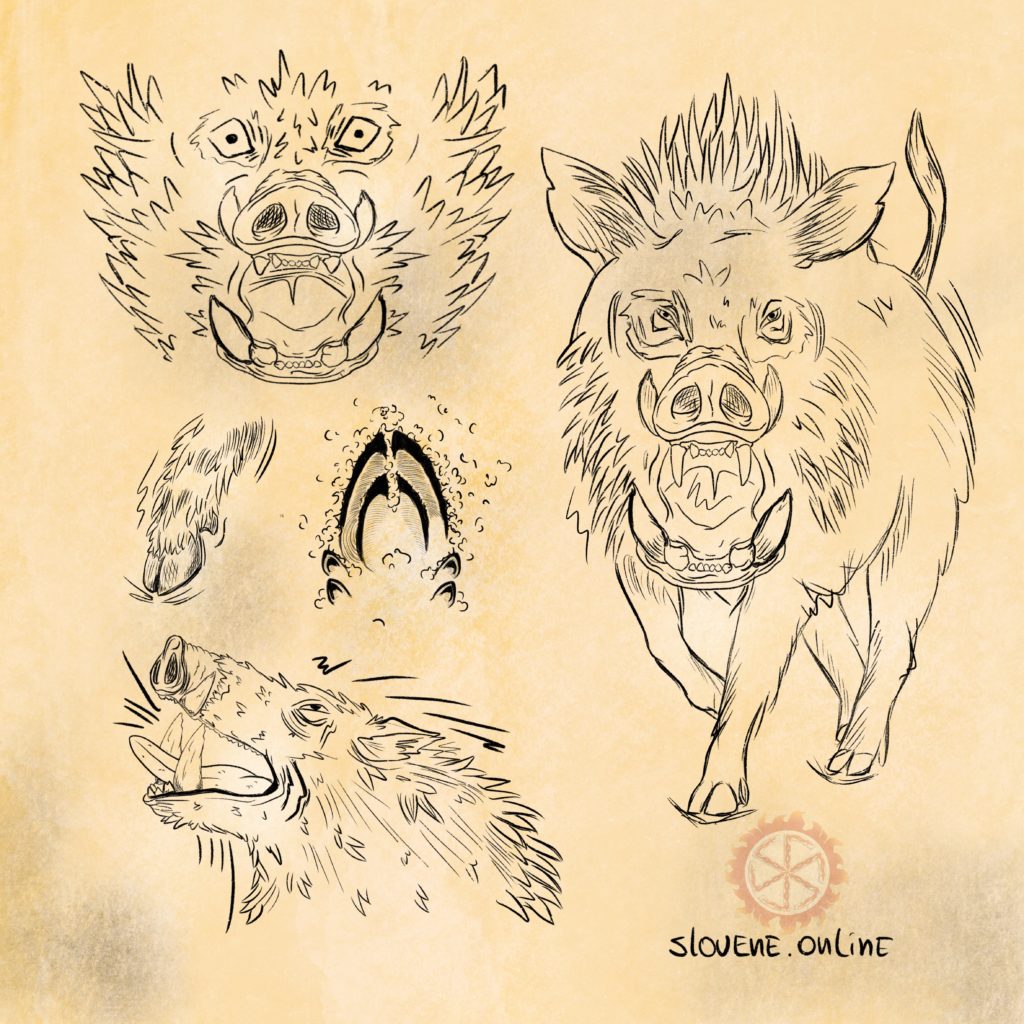We continue to work on the first story from the animated fantasy comic book series about the life, customs and beliefs of the Slavic tribes in the early Middle Ages.

We continue to work on the first story from the animated fantasy comic book series about the life, customs and beliefs of the Slavic tribes in the early Middle Ages.

Along with other “knowing” people (a shepherd, musician, blacksmith, etc.), the hunter was often believed to have magical abilities and witchcraft knowledge.
We continue to familiarize you with the customs and beliefs of the ancient Slavic people, while working on the animated fantasy comic book series. In such posts, as if jumping forward in time, we shed light upon and help to understand the events that will occur in our story … 😉
Hunting craft was passed within a family from generation to generation and was kept secret. Just like with a witchcraft, an elder hunter-sorcerer could teach an apprentice, who was subjected to various trials.
According to Russian beliefs, in order to hunt successfully, it was necessary to enter into a contract with Leshy (Borowy): without his permission, the hunter not only remained without prey, but could also get lost and die. The agreement had certain conditions, like not to take more prey than was allowed by Leshy, go hunting on certain days, etc. Otherwise, Leshy punished the hunter by whipping him with the tops of the trees or cursed him with a disease.
For the hunt to be successful, it was necessary to follow a number of prohibitions and prescriptions: for example, not to name some animals by their real name, but to use substitute names (thus, Russians avoided mentioning the raven, but called it “chicken” 🙂 ). There was a significant number of hunting spells to ensure abundant prey, to protect oneself and weapons from a curse, to drive away birds that interfere with hunting, particularly ravens. There were luck spells for hunting on hares, ducks, squirrels, bears, etc. The hunter pronounced a spell every time he went out on a hunt or enchanted various objects: a knife, a tree twig, bread, honey, a snowball, etc.
In addition to spells, numerous amulets were used to protect a hunter from wild beasts, and a hunting gear from an evil eye or curse. For example, it was believed that carrying a lynx claw could shield its owner from a predator and various dangers. Serbian hunters, in order to protect the caught prey from an evil eye, upon their return from the hunt, concealed the amount of prey and removed animal skin away from the prying eyes.
Source: “Slavic Antiquities” – encyclopedic dictionary in 5 volumes by Institute for Slavic Studies of the Russian Academy of Sciences.

Can you guess what kind of animal has passed here? 😉
We continue to work on the first story from the animated fantasy comic book series about the life, customs and beliefs of the Slavic tribes in the early Middle Ages.

Today we are giving an answer for the previous post’s question, as well as we will reveal a title of our first story about a life of Slavic tribes in the Early Medieval times… Guessed already? 😉 Indeed it is a BOAR! Introducing a concept art of one of the leading characters in the story…
According to archeology, the worshiping traditions of the Boar (Wieprz) by the Slavs are ancient. In 1908, 1975 and 1984 ancient oak trees with boar jaws affixed in them, were elevated from the bottom of Dnieper and Desna rivers. These sacred oak trees are dated from VIII to X century – covering a long period of history when sacrifices were made to the Slavic gods near these trees (an oak – is the tree of Slavic god Perun).
Well, this is about forest boars, but there were marine as well …In the very first years of XI century, Thietmar of Merseburg in his “The Chronicon” talks about a legend of the Slavic tribe Ratari, whose principal city of Rethra (Ridegost) was located on the Baltic Sea: “An old legend, enmeshed in various superstitions, testifies that when they are in a grave danger, a huge boar with white glistening fangs comes out of the sea… to reveal itself to many.”
Thus, the boar was specially honored by our Slavic ancestors.
